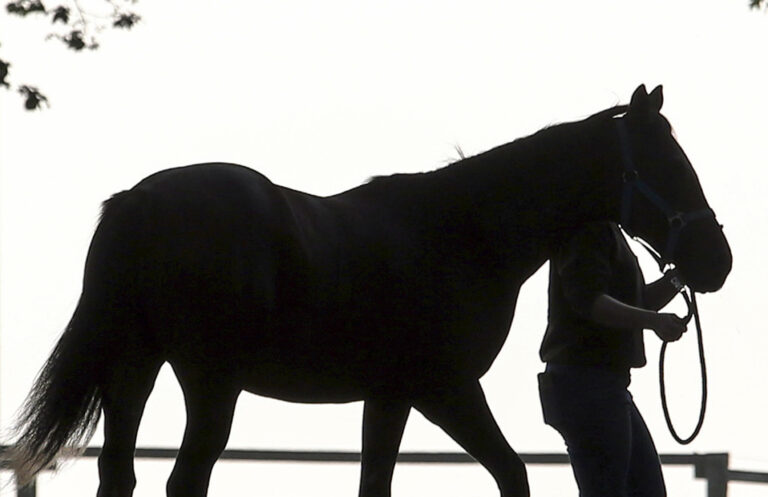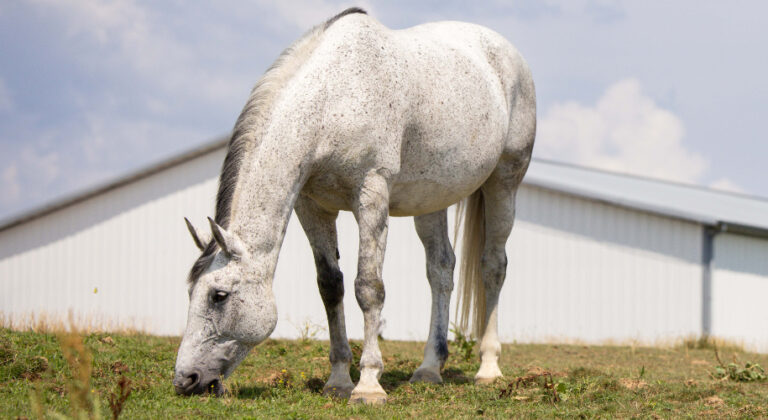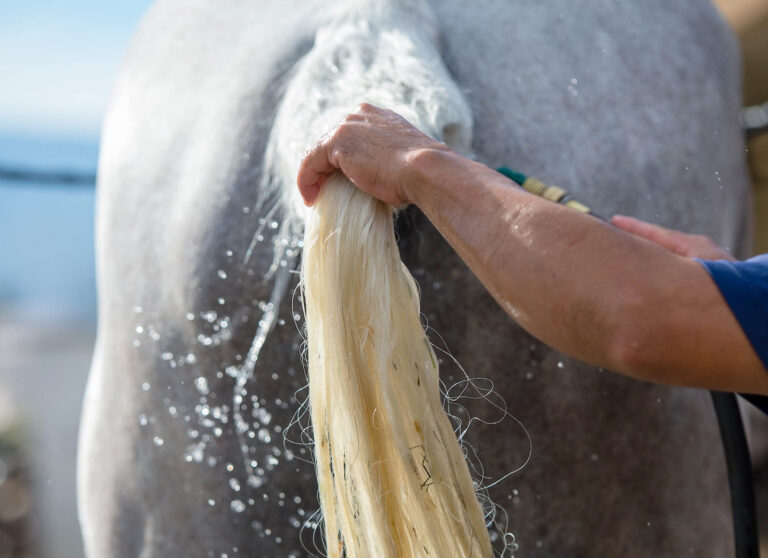In the early autumn, when temperatures begin to dip at night and we start dragging our own winter clothes out of storage, horse owners everywhere begin an obsessive daily debate: Does my horse need a blanket today?
There are many blanketing options available, and numerous factors play into this decision, so you can easily drive yourself crazy trying to decide when to blanket and which blanket to use. To help preserve everyone’s sanity, we asked professional groom and stable manager Max Corcoran, who spent 11 years with Olympic eventers Karen and David O’Connor, to share her blanketing system. Her trick is to follow a few simple rules, set flexible guidelines and try not to overthink it.
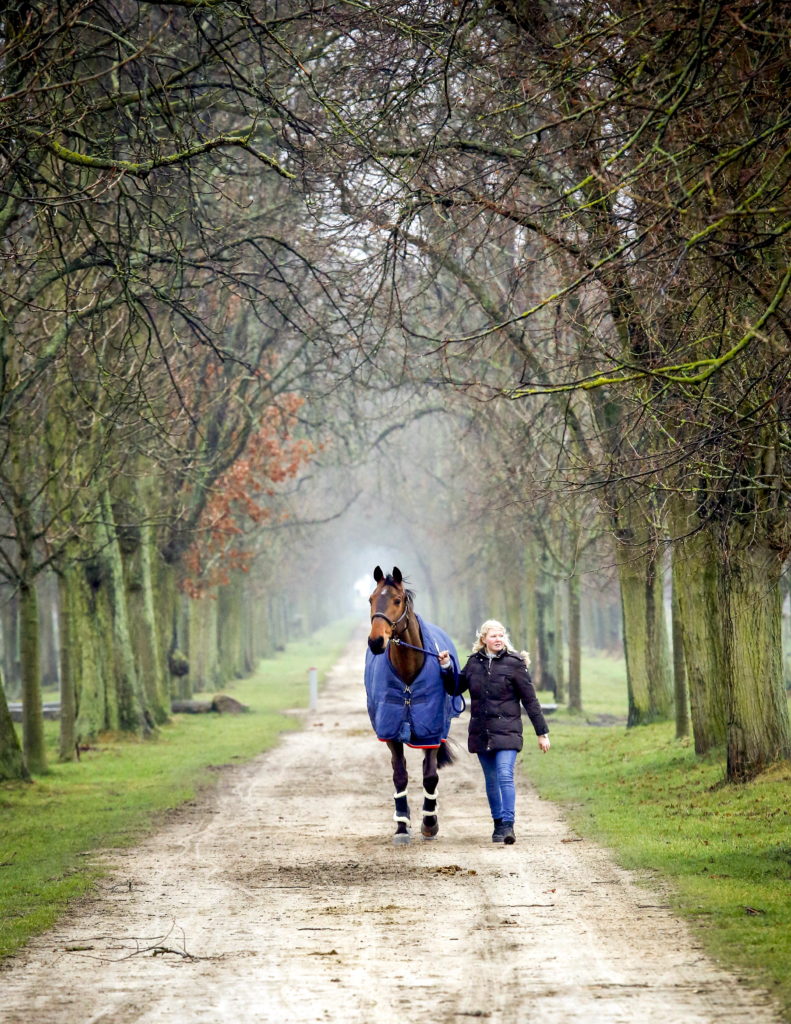
Unclipped vs. Clipped
Your horse’s blanketing needs depend on whether or not he’s been body-clipped. Here’s what Max recommends for the different situations:
- Unclipped: Horses who are healthy, in good weight and have not been clipped at all during the fall or winter do not need to be blanketed. That’s because they have built-in insulation. Their hair naturally puffs up when it’s cold, trapping in body heat. “That rule goes out the window if it’s wet,” Max says. A little rain or snow is no big deal, but when precipitation saturates the coat, the hair can’t fluff up to keep the horse warm. Your unclipped horse will also struggle to stay warm if his coat is very dirty or mud-caked, so groom him regularly.
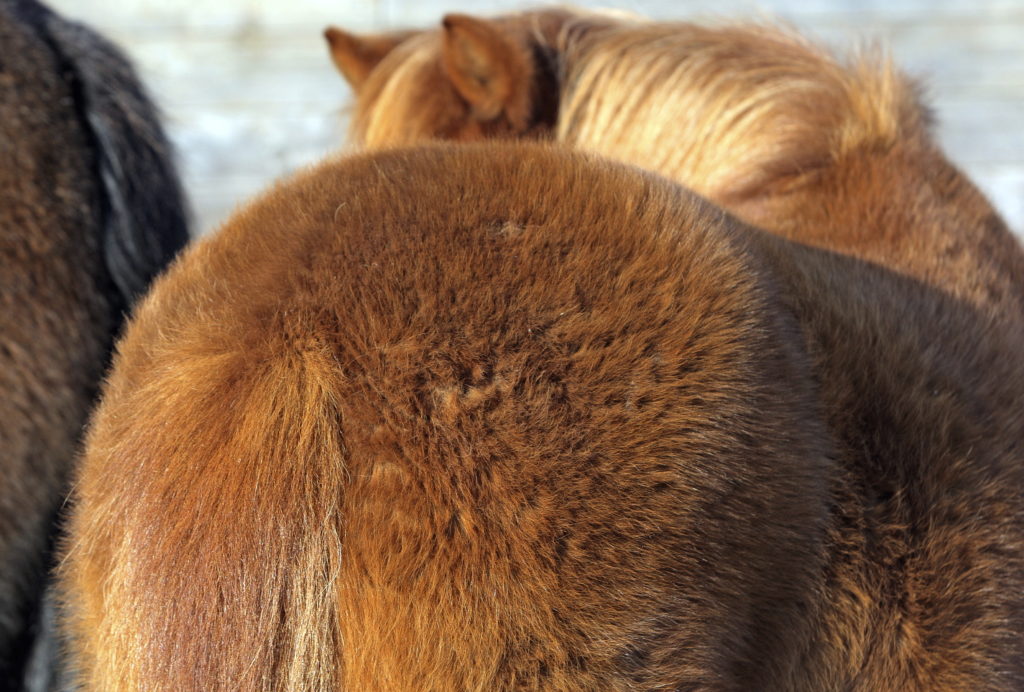
Unless the weather is wet, many unclipped healthy horses are content without a blanket. © Frank Sorge/arnd.nl - Trace-clipped: A trace clip removes the hair from the chest, belly and lower parts of the neck and flank. This type of clip keeps a horse from sweating too much when ridden but leaves some of his winter coat to provide warmth when he’s not exercising. “For every layer you’ve taken off your horse by clipping, you need to put back on him by blanketing,” Max says. “I think it’s a misconception that a trace-clipped horse has plenty of hair. The neck, belly and shoulders are still major muscle groups that hold heat. If that’s where you clip, they have nothing protecting them.” She gives a horse with a trace clip one less layer than a horse with a full body clip.

© Frank Sorge/arnd.nl
- Full-clipped: A full clip removes all the hair off a horse’s body, with the option of leaving the legs unclipped. This method eliminates any warmth and protection the coat could provide. A sheet, at minimum, is necessary when the temperature dips below 55 degrees Fahrenheit.
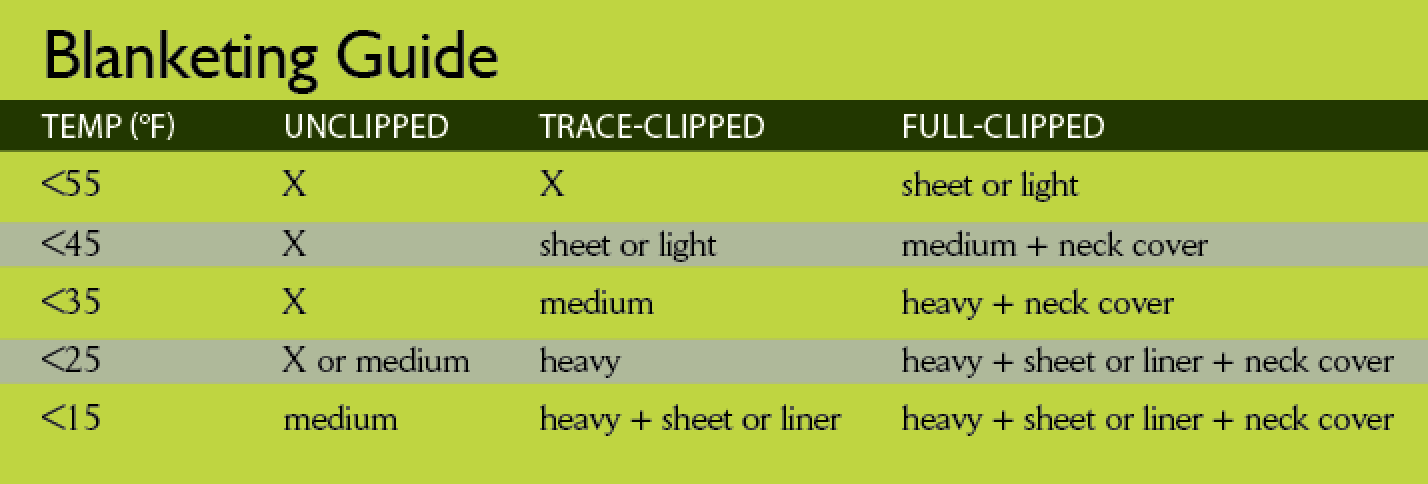
Sheet/Blanket Types
A blanket collection can easily become large and complicated. Max tries to keep things simple with three pieces of horse clothing: a turnout sheet, a medium stable blanket and a heavy turnout blanket. You might also like to have a medium turnout blanket, but in a pinch, a medium stable blanket with a turnout sheet on top works the same so long as the stable blanket has two belly straps to keep it secure. For horses who are tough to fit and have blankets that tend to shift, leg straps are helpful but not always required. Note that turnout sheets and blankets may be used indoors or outside, but stable sheets and blankets are not waterproof so should be used only indoors unless topped with a waterproof layer.
The term “fill” determines how warm a blanket is and is measured in grams (g). The greater the amount of fill, the more insulation a blanket provides.
- Turnout sheet/light turnout blanket—a waterproof sheet that protects a horse from wind and rain but provides only minimal warmth. Fill: None–100g
- Medium stable blanket—a non-waterproof blanket designed for indoor use; will not protect a horse from rain but provides some warmth. Fill: 200g–280g
- Medium turnout—a waterproof blanket that provides some warmth and protects a horse from wind and rain. Fill: 200g–280g
- Heavy turnout—a waterproof blanket that provides heavy warmth and protects a horse from wind/rain. Fill: 300g–400g
Weather Conditions and Environment
When calculating how the weather factors into your blanketing choices, also consider your horse’s basic living arrangements. Wind, for example, is not a concern for stabled horses. Some barn doors can even close up snugly, allowing the animals’ body heat to keep the barn toasty. To determine the temperature difference, place one thermometer inside the barn and one outside. Check them late at night or early in the morning. Then you’ll know how much warmer your stabled horse is inside the barn and be able to adjust his sheet/blanket layers according to that temperature.
When your horse is in a pasture, does he have access to a shelter to get out of the wind, rain and snow? Here’s how various conditions can affect his comfort:
- Wind makes weather conditions colder. If your horse has no shelter in his field, consider the wind-chill factor and blanket according to the “feels like” temperature.
- Rain: Body-clipped horses turned out in temperatures below 60 degrees should wear at least a turnout sheet or light turnout blanket. If it’s going to be below 55 degrees, raining for most of the night and the horses are outside without access to shelter, Max usually puts a turnout sheet or light blanket on the unclipped horses, too. Keep in mind, dampness may make it feel colder and factor into the “feels like” temperature.
- Ice/freezing rain: If there is going to be freezing rain or sleet, consider keeping your horse inside. Besides being very cold, this type of weather makes it challenging for horses to keep warm because it can flatten or soak their coats. If he must be turned out, consider the “feels like” temperature and make sure he has some sort of protection, whether it’s a shed, grove of trees or a blanket.
Too Hot or Too Cold?
“Just because you’re cold does not mean your horse is cold,” Max says. Fair enough, but how can you tell if your horse is cold? If he is shivering, he’s chilled and trying to warm himself. A shivering horse also burns more calories so is at risk of weight loss. Another way to tell if your horse is cold is to feel his nose and ears with your bare hand. If they are cold to the touch, the rest of him probably is, too.
While we hate the idea of our horses being cold, it’s dangerous to overblanket. If your horse begins to sweat under his blanket, he can overheat or, if wet hair traps the moisture against his body for too long, he could get chilled. Thankfully, it’s easy to tell if a horse is too hot under his blanket. Just place your bare hand on his shoulder inside the blanket. If he is sweating, he’s too hot. Remove his blanket or give him one with a lighter weight—but only after he’s had time to dry completely.
What if it’s cold in the morning and warm in the afternoon, and no one will be there to change or remove your horse’s blanket? It’s better for him to be a little cold for a short while than to be too hot for any amount of time. Turn him out with the clothes he needs for the majority of the day.
Type of Horse
Breed and type of horse may play a factor in blanketing decisions because some horses naturally run hot or cold. For instance, Thoroughbreds often carry less body weight and grow less coat, so they tend to get colder more easily than heavier breeds. But there are exceptions to every rule.
“It goes back to the old adage of ‘know your horse,’” Max says. “I’ve looked after warmbloods who run cold and vice versa. Giltedge [a top event horse who won multiple medals with rider David O’Connor] was a thin-skinned mostly Thoroughbred who ran hot all the time. He always wore one less rug than everybody else. If he decided he was hot, he would take his clothes off in the middle of the night.
“If I have a horse who does run cold, I’ll use a therapeutic sheet [a sheet designed to reduce inflammation and increase circulation] underneath [as a base] because it uses body heat to increase heat in the muscles.”
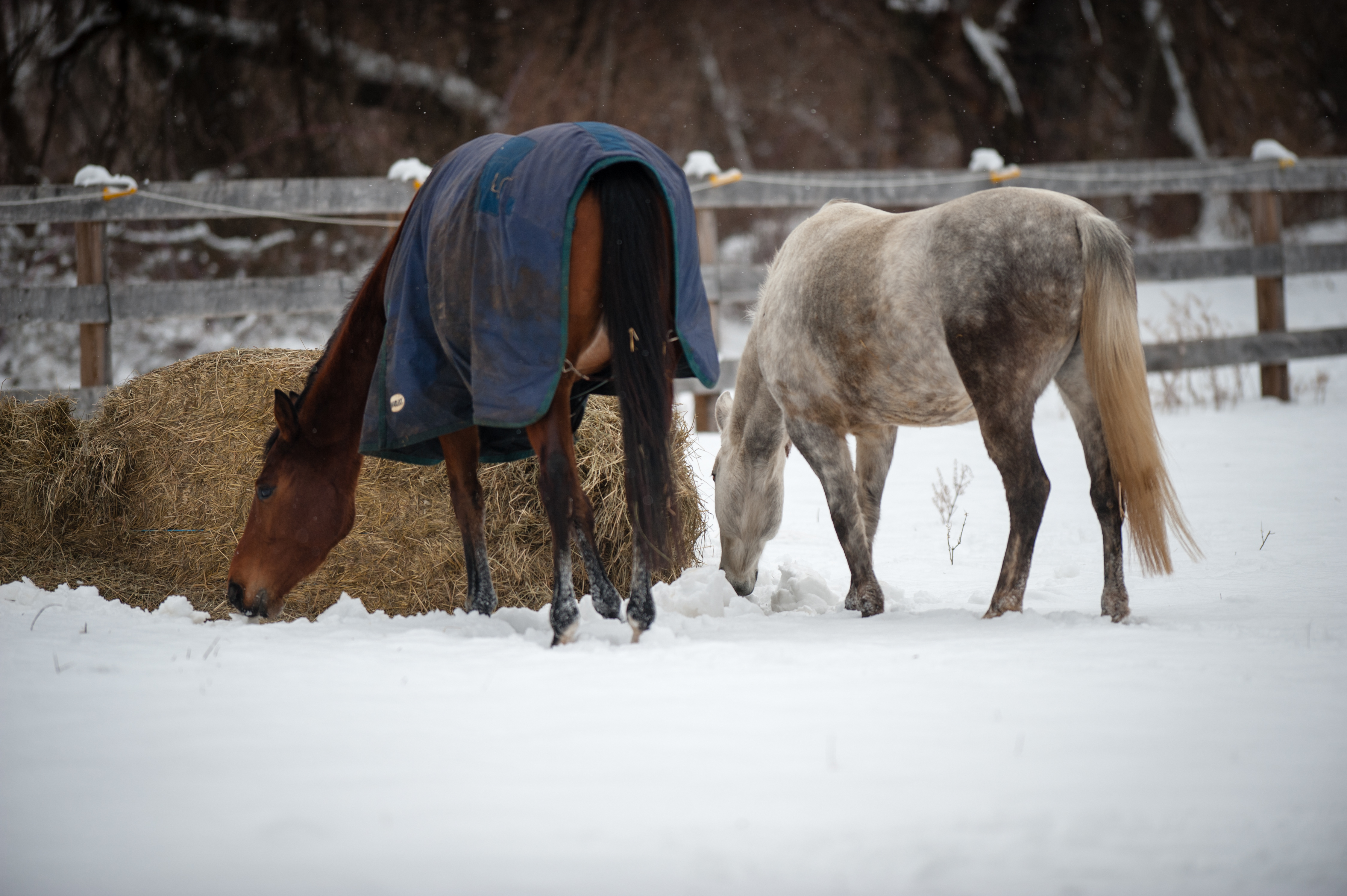
Nutrition
“Hay fuels the fire,” says Max. As a horse metabolizes forage, his digestive system generates heat and helps keep him warm. During winter, when grass is scarce or there is frost or snow on the ground, provide plenty of good-quality hay, both inside the barn and out in the field, whether your horse is wearing a blanket or not.
Age and Health
Age can affect how well horses keep themselves warm. Older horses metabolize food less efficiently and may have a harder time keeping on weight. Some may also have less muscle and grow a thinner winter coat, although this varies from horse to horse. “It can be harder when they’re older to stay warm or warm back up again,” says Max.
By the same token, a horse with health issues or a “difficult keeper” who has a hard time maintaining weight in winter may need help staying warm by remaining indoors at night or in inclement weather and wearing a blanket.
Again, Max says, the best practice is to know your horse. An 18-year-old horse might get cold more easily than one who is 25. It all depends on the individual and his overall health. Monitor any older horse closely throughout winter to check if he is losing weight, his body condition changes or he shows signs of being cold.
A Good Fit
An ill-fitting blanket is not only uncomfortable, but it alters how effective the blanket is at keeping a horse warm. A blanket that is too big can shift backward and slide sideways, exposing large parts of the body and risking entanglement. A blanket that is too small can constrict movement, cause rubs or hair loss and probably will not keep him all that warm.
“I like to be able to pull a blanket forward a little, so the horse can put his head down without choking himself. But it should still cover the entire hindquarters and top of the tail bone,” Max says.
Remember that every brand of blanket is different. Follow each blanket’s measuring guide. Some run large or small, and some are even built for different body types (e.g., narrow shoulders versus broad). Try different sizes and brands until you find one that works best for your horse. A shoulder guard (a lightweight, stretchy, fitted garment) can also help prevent rubs.
This article was originally published in the October 2018 issue of Practical Horseman.





